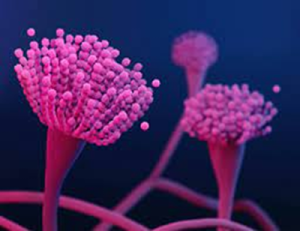Aspergillus spp. is a common fungi that can be found in the environment. Aspergillus fungi can often be found around plants and trees, including rotting leaves and compost; but also in air conditioning and heating systems, insulation material or dust.
It causes a disease called aspergillosis.
The Incubation period varies widely from days to months.
